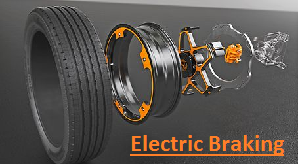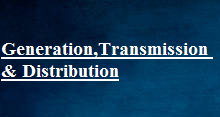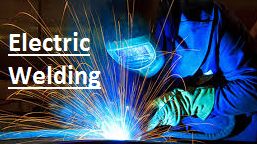Different types of tariff in power system
Different types of tariff used in electrical power system
1. Simple tariff:
- When there is a fixed rate per unit of energy consumed, it is known as simple tariff (Uniform Rate Tariff)This is the most simplest of all tariff.
- In this type, the price charged per unit is constant.
- It means, the price will not vary with increase or decrease in number of units used.
- In this type of tariff, there is no difference for small and big consumers.
- Same amount of rate is applicable for both the consumers. This is the disadvantage of this tariff rate.
Advantages
- Simplest method
- Easily understandable and easy to apply
- Each consumer has to pay according to his utilization
Disadvantages
- There is no discrimination according to the different types of consumers.
- The cost per unit is high.
2. Flat rate tariff:
- In this tariff, different types of consumers are charged at different rates of cost per unit (1kWh) of electrical energy consumed.
- Different consumers are grouped under different categories. Then, each category is charged money at a different uniform rate.
- The different rates are decided according to the consumers, their loads and load factors.
Advantages
- More fair to different consumers.
- Simple calculations.
Disadvantages
- A particular consumer is charged at a particular rate.
- Since different rates are decided according to different loads, separate meters need to be installed for different loads such as light loads, power loads, etc. This makes the whole arrangement complicated and expensive.
- All the consumers in a particular “category” are charged at the same rates. However, it is fairer if the consumers that utilize more energy be charged at lower fixed rates.
3. Block rate tariff:
- In this tariff, the first block of the energy consumed (consisting of a fixed number of units) is charged at a given rate and the succeeding blocks of energy) are charged at progressively reduced rates.
- Energy consumption is divided into blocks and the price per unit is fixed in each block.
- Example,the first 50 units (1st block) may be charged at 4 rupees per unit; the next 30 units (2nd block) at 3 rupees per unit and the next 30 units (3rd block) at 2 rupees per unit.
Advantages
- The consumer gets an incentive to consume more electrical energy. This increases the load factor of the system and hence the cost of generation is reduced.
Disadvantages
- Lack of measure of the consumer’s demand. This type of tariff is being used for the majority of residential and small commercial consumers.
4. Two – part tariff:
- When the rate of electrical energy is charged on the basis of maximum demand of the consumer and the units consumed, it is called a two-part tariff.
- In this tariff scheme, the total costs charged to the consumers consist of two components: fixed charges and running charges.
- It can be expressed as: Total Cost = [A(kW)+B(kWh)]Rs. Where, A = charge per kW of max demand and B = charge per kWh of energy consumed
- The fixed charges will depend upon maximum demand of the consumer and the running charge will depend upon the energy (units) consumed & running charges are due to the operating cost which varies with variation in generated (or supplied) energy.
- This type of tariff is mostly applicable to industrial consumers who have appreciable maximum demand.
Advantages
- It is easily understood by the consumers.
- It recovers the fixed charges which depend upon the maximum demand of the consumer but are independent of the units consumed
Disadvantages
- The consumer has to pay the fixed charges irrespective of the fact whether he has consumed or not consumed the electrical energy.
- There is always error in assessing the maximum demand of the consumer.
5. Maximum demand tariff:
- In this tariff, the energy consumed is charged on the basis of maximum demand.
- This is similar to that of Two part tariff. The max demand is calculated by installing maximum demand meter.
- Generally applied to large industrial consumers.
6. Power factor tariff:
- In this tariff scheme, the Power factor of the consumer’s load is taken into consideration.
- Power factor is an important parameter in power system. For optimal operation, the Pf must be high.
- A low power factor increases the rating of station equipment and line losses. Therefore, a consumer having low power factor must be penalized.
The following are the important types of power factor tariff:
(i) KVA maximum demand tariff: It is a modified form of a two-part tariff. In this case, the fixed charges are made on the basis of maximum demand in kVA and not in kW. As kVA is inversely proportional to power factor, therefore, a consumer having low power factor has to contribute more towards the fixed charges. This type of tariff has the advantage that it encourages the consumers to operate their appliances and machinery at improved power factor.
(ii) Sliding scale tariff: This is also known as average power factor tariff. In this case, an average power factor, say 0·8 lagging, is taken as the reference. If the power factor of the consumer falls below this factor, suitable additional charges are made. On the other hand, if the power factor is above the reference, a discount is allowed to the consumer.
(iii) KW and KVAR tariff: In this type, both active power (kW) and reactive power (kVAR) supplied are charged separately. A consumer having low power factor will draw more reactive power and hence shall have to pay more charges.
Desirable characteristics of a Tariff




Recent Comments